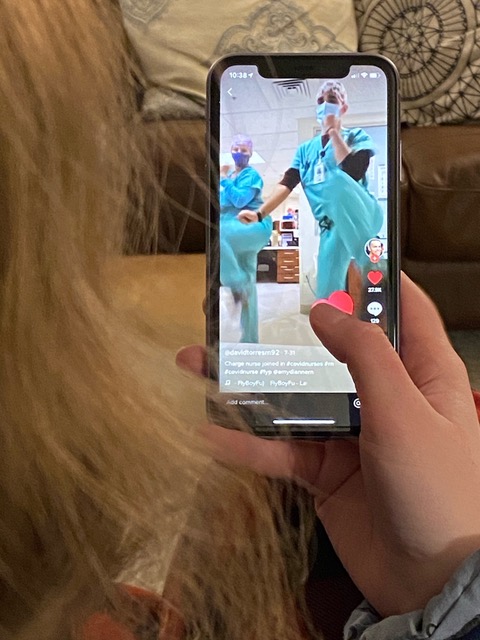
Story
A TikTok Pandemic Story
In 2020, a generation of young people experiencing isolation and loneliness in the midst of a pandemic seized on a new platform called TikTok. This new generation of media creators transformed trauma into creativity and, ultimately, connection.
Editor’s Note: How will 2020 go down in history? In the Hindsight 20/20 project from The Colorado Magazine, twenty of today's most insightful historians and thought leaders imagine themselves in 2120, looking back on 2020 and sharing their visions of how that year will stand the test of time.
Expression of the self through media—narrating your story to the world, putting it out there—has existed and evolved as long as communication technologies have existed. From the pencil to the PC, humans have always creatively engaged culture and found ways to tell the world who they are and why they matter. As media scholar Nick Couldry once said, the ability for humans to have voice is a human good.
So, when classroom doors shuttered and faces were covered in March of 2020, the world was once again in a space where human creativity would attempt to solve its communicative challenges.
Suddenly, the whole world was traumatized, and people only had technology to keep them company. Collectively, they had no idea how to deal with this level of suffering—but they did have social media, and often, in that space, people were more creative than anyone ever could have imagined.

The TikTok app provided a platform for many who might otherwise have been silent during the 2020 pandemic.
And that’s where TikTok came in. TikTok was a space for short videos that could be quickly and easily edited together to tell stories. In the United States alone, TikTok had more than 45.6 million users at that time—nearly 14 percent of the total US population—and its unique algorithm meant users of this platform saw global videos rather than just those of friends they followed. Thus, TikTok offered a diverse array of content to users trapped in their homes and in need of entertainment.
But when these TikTok users themselves got sick with Covid-19, they creatively engaged this platform to be a space for coping during one of the most unprecedented traumas facing communities across the globe. In particular, students—suddenly trapped in quarantine spaces on college campuses to prevent the spread of the virus after a positive test—took to TikTok to narrate their experiences, to give testimony. From sharing their mundane daily tasks to expressing their deepest fears about being sick and alone, these young adults offered a window into the pandemic that was hard to see in mainstream news.
Everywhere people looked, they were using social media to make meaning—and TikTok was where they went to laugh, to play, to dance, and to express their voices. Looking back at that resilient world, while people did encounter challenges in access, in equality, in learning, in connection, they could also see how much there was to be found in that time of suffering.
From the man with his guitar (@someguywithaguitar, as was the naming custom in that era) capturing a mood through his music while sitting safely in his car, to the way TikTok was mobilized in the highly contentious presidential election, to a video of a man dancing with a goose (@hartyt), creativity abounded.
There were a lot of fears about society’s new reliance on media in the times of the pandemic, but even while everyone grew tired of seeing each other predominantly through screens, one thing was certain: There was a new boon of culture and meaning being made by everyday people, from the safety of their quarantines, that changed what we would come to think of as cool, interesting, and entertaining, and in so doing changed forever how media helps us experience our world.
More from the Hindsight 20/20 project in The Colorado Magazine
A Pivotal—and Long Overdue—Moment for Change The year 2020 was not unprecedented. Rather, it was a stark reminder that racism and classism had for too long gone unresolved. It was a time for action. The youth of 2020 went on to become the chroniclers of their era—and the leaders of the next generation of resistance to the inequities the pandemic had exposed.
2020: Year of Destiny Though Americans in 2020 felt the weight every day of a global pandemic, in the end they endured. What was harder to appreciate at the time was the pandemic's long-lasting impact on American politics—and democracy itself.
Heard Immunity A music writer ponders the quaint habits of music fans of 2020, who, in their day, lamented the loss of such archaic practices as live concerts, in-person gatherings of any kind, and now-outdated technologies. But music itself lives on, as does a certain rock ’n’ roll guitarist.
